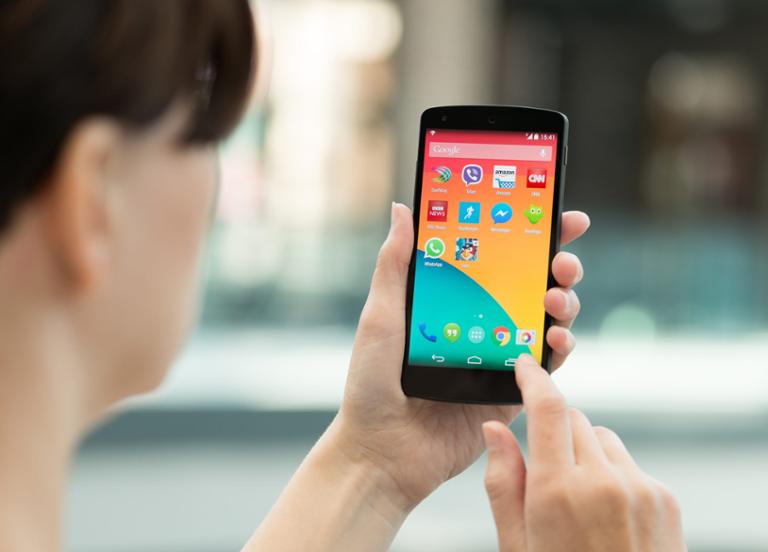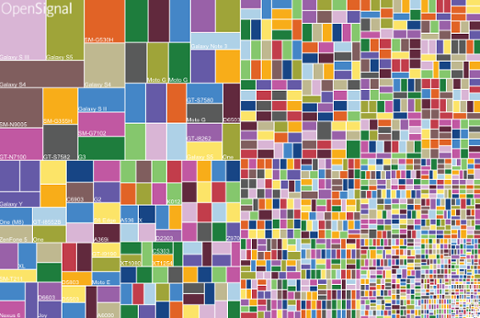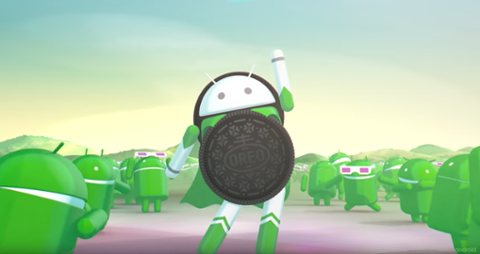
Android remains a fragmented environment, according to Google’s latest
developer data-dump. The current version of the operating system, Nougat, only runs on 7.1 percent of Android devices, in contrast to older versions such as KitKat (4.4) and Lollipop (5.0 and 5.1), which run on 18.8 percent and 32 percent of devices, respectively.

For years, developers (and users) have complained that the Android ecosystem is
far too fragmented. Unlike Apple, which exerts tight control over iOS devices, Google opened up Android to any manufacturer capable of installing the operating system on a mobile device. As a result, the world is filled with a plethora of smartphones and tablets running radically different versions of Android, all of which update on divergent schedules. Indeed, you could argue that some level of fragmentation is inevitable when you have thousands of devices with varying screen sizes and hardware setups, produced by dozens of handset manufacturers, running on different carriers. And even if a carrier or manufacturer pushes an update—and there’s no guarantee of that—a certain percentage of device owners will always neglect to do so. From a security perspective, fragmentation is bad—devices running older versions of an operating system are more vulnerable to the latest hacks and bugs. It also risks putting Google at a disadvantage when it comes to augmented reality (AR) and virtual reality (VR), which could evolve into the hottest consumer-tech innovations since smartphones themselves. That’s because Google sees the smartphone OS as the bedrock of its AR/VR aspirations; Android Nougat can deliver a VR experience in conjunction with Google Daydream, the company’s newish VR headset. Meanwhile, AR is beginning to make its presence felt, thanks to smartphone apps and games such as last summer’s blockbuster “Pokemon Go”—but AR requires cutting-edge software and hardware. There’s every chance that, as time passes, the majority of Android devices will end up running more recent versions of the OS. But for the moment, it seems that the bulk of users remain stuck in the past—and that creates potential problems for developers building cutting-edge apps. Fortunately, Google has a resource for supporting
different Android versions on its developer site.
 Android remains a fragmented environment, according to Google’s latest developer data-dump. The current version of the operating system, Nougat, only runs on 7.1 percent of Android devices, in contrast to older versions such as KitKat (4.4) and Lollipop (5.0 and 5.1), which run on 18.8 percent and 32 percent of devices, respectively.
Android remains a fragmented environment, according to Google’s latest developer data-dump. The current version of the operating system, Nougat, only runs on 7.1 percent of Android devices, in contrast to older versions such as KitKat (4.4) and Lollipop (5.0 and 5.1), which run on 18.8 percent and 32 percent of devices, respectively.  For years, developers (and users) have complained that the Android ecosystem is far too fragmented. Unlike Apple, which exerts tight control over iOS devices, Google opened up Android to any manufacturer capable of installing the operating system on a mobile device. As a result, the world is filled with a plethora of smartphones and tablets running radically different versions of Android, all of which update on divergent schedules. Indeed, you could argue that some level of fragmentation is inevitable when you have thousands of devices with varying screen sizes and hardware setups, produced by dozens of handset manufacturers, running on different carriers. And even if a carrier or manufacturer pushes an update—and there’s no guarantee of that—a certain percentage of device owners will always neglect to do so. From a security perspective, fragmentation is bad—devices running older versions of an operating system are more vulnerable to the latest hacks and bugs. It also risks putting Google at a disadvantage when it comes to augmented reality (AR) and virtual reality (VR), which could evolve into the hottest consumer-tech innovations since smartphones themselves. That’s because Google sees the smartphone OS as the bedrock of its AR/VR aspirations; Android Nougat can deliver a VR experience in conjunction with Google Daydream, the company’s newish VR headset. Meanwhile, AR is beginning to make its presence felt, thanks to smartphone apps and games such as last summer’s blockbuster “Pokemon Go”—but AR requires cutting-edge software and hardware. There’s every chance that, as time passes, the majority of Android devices will end up running more recent versions of the OS. But for the moment, it seems that the bulk of users remain stuck in the past—and that creates potential problems for developers building cutting-edge apps. Fortunately, Google has a resource for supporting different Android versions on its developer site.
For years, developers (and users) have complained that the Android ecosystem is far too fragmented. Unlike Apple, which exerts tight control over iOS devices, Google opened up Android to any manufacturer capable of installing the operating system on a mobile device. As a result, the world is filled with a plethora of smartphones and tablets running radically different versions of Android, all of which update on divergent schedules. Indeed, you could argue that some level of fragmentation is inevitable when you have thousands of devices with varying screen sizes and hardware setups, produced by dozens of handset manufacturers, running on different carriers. And even if a carrier or manufacturer pushes an update—and there’s no guarantee of that—a certain percentage of device owners will always neglect to do so. From a security perspective, fragmentation is bad—devices running older versions of an operating system are more vulnerable to the latest hacks and bugs. It also risks putting Google at a disadvantage when it comes to augmented reality (AR) and virtual reality (VR), which could evolve into the hottest consumer-tech innovations since smartphones themselves. That’s because Google sees the smartphone OS as the bedrock of its AR/VR aspirations; Android Nougat can deliver a VR experience in conjunction with Google Daydream, the company’s newish VR headset. Meanwhile, AR is beginning to make its presence felt, thanks to smartphone apps and games such as last summer’s blockbuster “Pokemon Go”—but AR requires cutting-edge software and hardware. There’s every chance that, as time passes, the majority of Android devices will end up running more recent versions of the OS. But for the moment, it seems that the bulk of users remain stuck in the past—and that creates potential problems for developers building cutting-edge apps. Fortunately, Google has a resource for supporting different Android versions on its developer site. 


